Trulicity and Mounjaro are both medications prescribed for the treatment of type 2 diabetes. They belong to the same drug class, known as glucagon-like peptide-1 (GLP-1) agonists, which help lower blood sugar levels in patients suffering from this chronic condition. While they have similar properties, they possess slightly different mechanisms of action, making it essential for individuals with diabetes and healthcare providers to understand the nuances between the two drugs.
Trulicity (dulaglutide) has been in use for several years and is a proven medication for managing blood sugar levels while also promoting weight loss in some cases. On the other hand, Mounjaro (tirzepatide) is a newer medication that has shown promising results in clinical trials in terms of blood sugar control and possibly offering additional weight loss benefits.
Choosing the right medication for the management of type 2 diabetes depends on multiple factors, such as a patient’s specific needs, medical history, and possible side effects. This article will provide an in-depth comparison of Trulicity and Mounjaro to help patients and healthcare providers make an informed decision in selecting the most suitable treatment option.
Reader's Roadmap
Understanding Mounjaro and Trulicity
Mounjaro (tirzepatide) and Trulicity (dulaglutide) are both FDA-approved medications prescribed for the treatment of type 2 diabetes. They belong to the class of drugs called GLP-1 receptor agonists, which work by mimicking the effects of the natural hormone glucagon-like peptide-1 (GLP-1) to help control blood sugar levels.
The active ingredient in Mounjaro is tirzepatide, while the active ingredient in Trulicity is dulaglutide. Although both medications are GLP-1 receptor agonists, they possess slightly different mechanisms of action. Mounjaro, in addition to being a GLP-1 agonist, also acts on another hormone called glucose-dependent insulinotropic polypeptide (GIP), making it a dual-acting agent.
Some of the key differences between Mounjaro and Trulicity include:
- Mounjaro’s dual action as a GLP-1 and GIP agonist
- Trulicity’s exclusive action as a GLP-1 agonist
Despite these differences, both medications aim to lower blood sugar levels in people with type 2 diabetes. This is achieved by promoting insulin secretion, inhibiting glucagon release, and slowing gastric emptying. As a result, patients may experience better blood sugar control and potential weight loss.
In terms of dosage and administration, Mounjaro and Trulicity are both injections administered under the skin, typically once a week. The specific dose and duration of treatment depend on the individual’s response, tolerability, and healthcare professional’s recommendations.
It is essential to discuss the best treatment options with your healthcare provider, as they will have the most comprehensive understanding of your medical history and specific needs. By carefully considering the differences between Mounjaro and Trulicity and their respective properties, healthcare professionals can determine the most appropriate medication to help manage type 2 diabetes.
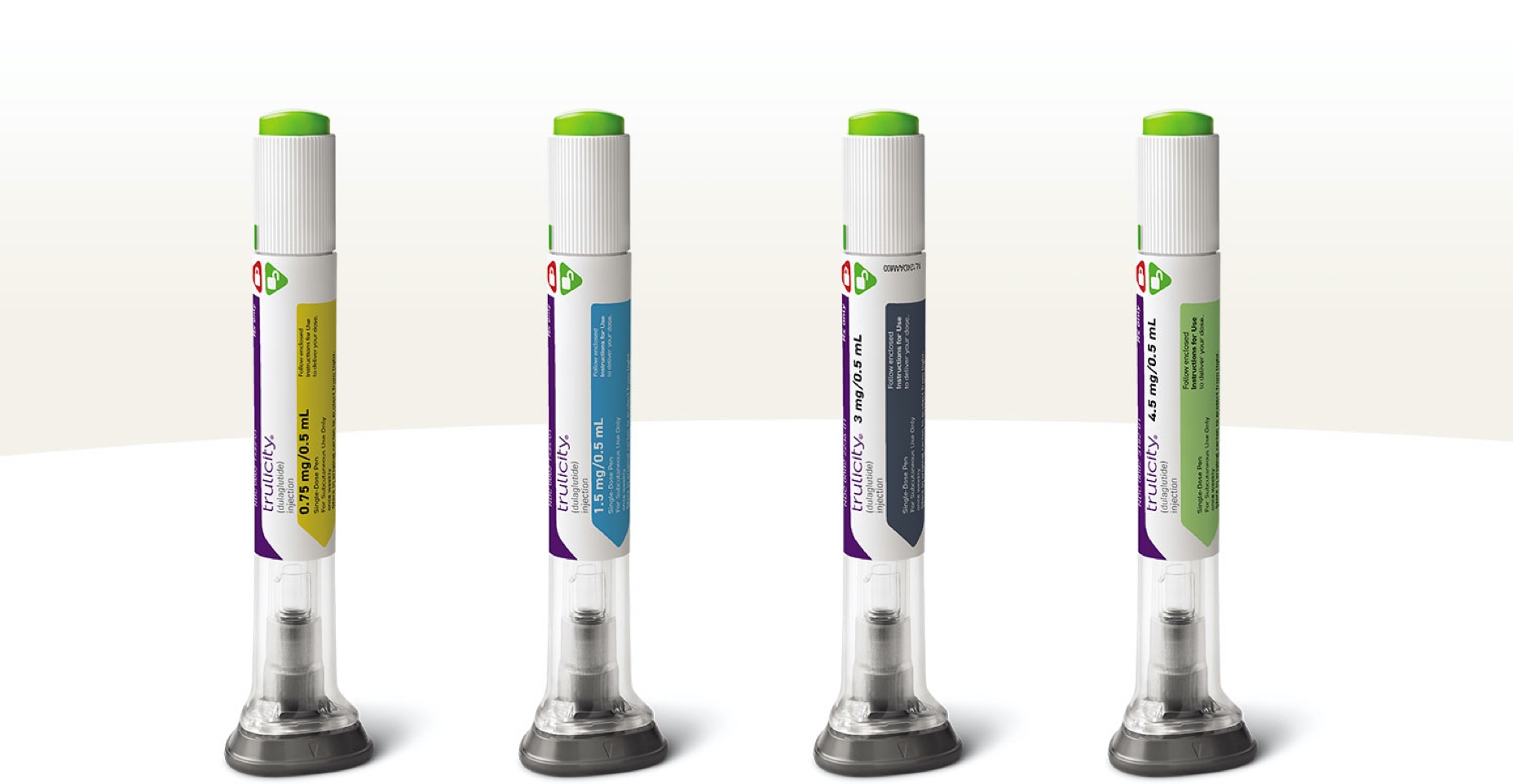
How Mounjaro and Trulicity Work
Mounjaro and Trulicity are both medications used to treat type 2 diabetes, and they work in slightly different ways to help control blood sugar levels. Mounjaro, also known as tirzepatide, is a novel GLP-1 receptor agonist that has a dual mechanism of action targeting both the GLP-1 and GIP receptors. On the other hand, Trulicity, or dulaglutide, is a long-acting GLP-1 receptor agonist that has demonstrated efficacy for glycemic control and weight loss.
The glucagon-like peptide-1 (GLP-1) and glucose-dependent insulinotropic polypeptide (GIP) are incretin hormones that play an essential role in regulating glucose homeostasis. They enhance glucose-dependent insulin secretion, inhibit glucagon secretion, and delay gastric emptying, contributing to blood glucose control.
Mounjaro, by simultaneously acting on both the GLP-1 and GIP receptors, works to stimulate insulin secretion and suppress glucagon release in a glucose-dependent manner, thus reducing blood glucose levels. Additionally, Mounjaro improves beta-cell function and enhances insulin sensitivity, leading to better glycemic control and potential benefits for cardiovascular health.
In contrast, Trulicity acts as a GLP-1 receptor agonist and mimics the effects of the naturally occurring GLP-1 hormone. By binding to the GLP-1 receptor on pancreatic beta-cells, it stimulates insulin secretion while decreasing both glucagon secretion and appetite. As a result, Trulicity helps control blood sugar levels, with the added benefit of promoting weight loss.
Both medications are administered as once-weekly injections and are indicated for use in combination with diet and exercise to improve glycemic control in adults with type 2 diabetes mellitus. With their unique mechanisms of action targeting different aspects of glucose metabolism, Mounjaro and Trulicity can both be effective options for managing type 2 diabetes.
Dosage and Administration
Trulicity and Mounjaro are both administered as subcutaneous injections for the treatment of type 2 diabetes. However, they have different dosing regimens and administration methods.
Trulicity is available as a prefilled pen device and is typically injected once a week. The dosages for Trulicity are incrementally increased over time, starting at 0.75mg and gradually titrating up to a weekly dosage of 4.5mg. For administration, one may choose to inject Trulicity in the abdomen, thigh, or upper arm. It is essential to rotate injection sites to avoid irritation and discomfort.
As for Mounjaro, information on its specific dosage and administration is limited since it is a newer medication. However, similar to Trulicity, Mounjaro is likely to be administered as a subcutaneous injection in the abdomen, thigh, or upper arm. Since both medications belong to the same drug class, the dosing regimen for Mounjaro may follow a similar pattern to that of Trulicity. It is essential to follow a healthcare provider’s instructions and recommendations when administering either medication.
In conclusion, Trulicity and Mounjaro are administered via subcutaneous injections with different dosing regimens. The prefilled pen device makes it convenient for patients to self-administer these medications.
Side Effects Overview
Trulicity and Mounjaro are both GLP-1 receptor agonists used for managing type 2 diabetes. While they share similarities in their mechanism of action, they have some differences in their side effect profiles.
Trulicity (dulaglutide) commonly presents with gastrointestinal side effects. Nausea, diarrhea, and vomiting are some of the more frequent occurrences in patients. Constipation and indigestion have also been reported but are less common. In most cases, these side effects are mild to moderate in severity and tend to diminish over time as the body adjusts to the medication. A study has shown that patients using Trulicity may experience less severe side effects compared to Mounjaro.
Mounjaro (tirzepatide), on the other hand, is known to cause slightly more severe gastrointestinal side effects than Trulicity. Users of Mounjaro have reported experiencing nausea, diarrhea, frequent bowel movements, and retching. Although these side effects generally occur more intensely compared to Trulicity, they are still considered manageable. It is essential to monitor and report any discomfort or persistent side effects to a healthcare professional. Patients should be encouraged to continue taking their medication as prescribed, as these side effects often subside with time.
Both medications can potentially cause a decreased appetite, which may contribute to weight loss in some individuals. This appetite-suppressing effect is beneficial for patients with type 2 diabetes who struggle with weight management. However, the extent of weight loss and appetite suppression varies from person to person and should be discussed with a healthcare provider.
In conclusion, Trulicity and Mounjaro have overlapping side effect profiles, predominantly affecting the gastrointestinal system. While Mounjaro may exhibit more severe side effects than Trulicity, most patients find these symptoms manageable and temporary. Consistent monitoring and communication with healthcare professionals are crucial to ensure patients receive the most suitable treatment for their individual needs.
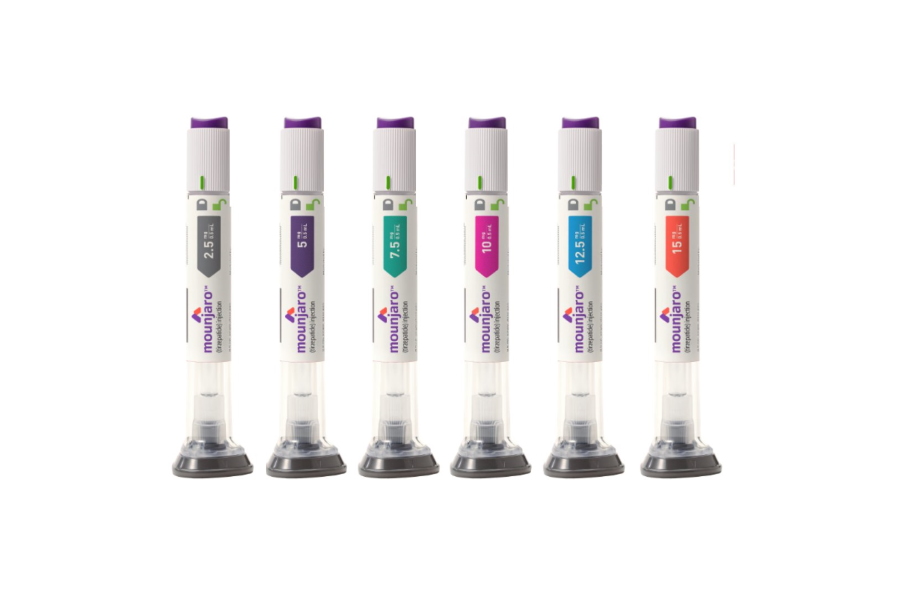
Serious Side Effects and Risks
Trulicity and Mounjaro are both medications used to treat type 2 diabetes in adults. While these medications can be effective in managing blood sugar levels, they can also come with some serious side effects and risks.
One potential side effect of both Trulicity and Mounjaro is pancreatitis. Pancreatitis is an inflammation of the pancreas, which can cause severe abdominal pain, vomiting, and fever. In rare cases, pancreatitis can lead to hospitalization or even death. Patients using these medications should be aware of this risk and contact their doctor immediately if they experience symptoms of pancreatitis.
Gallbladder problems and kidney problems are other serious side effects that may occur while using Trulicity or Mounjaro. These issues can range from the formation of gallstones and kidney stones to more severe kidney damage. Patients should discuss any previous or ongoing issues with their doctor before starting these medications.
In addition to these risks, there have been reports of increased incidents of thyroid cancer, specifically medullary thyroid carcinoma, in patients using medications similar to Trulicity and Mounjaro. While the risk of thyroid cancer may be low, it is still essential for patients to be aware of this potential side effect. Regular thyroid monitoring and discussions with healthcare providers can help in managing this risk.
Another rare but serious risk associated with these medications is the development of multiple endocrine neoplasia syndrome type 2 (MEN2). MEN2 is a hereditary condition characterized by the development of tumors in multiple endocrine glands. It is believed that Trulicity and Mounjaro may increase the risk of developing this condition. Patients with a family history of MEN2 or symptoms consistent with the syndrome should speak with their doctor before starting these medications.
Though instances of heart attack and stroke are not directly linked to the use of Trulicity and Mounjaro, it is important for patients with type 2 diabetes to manage their overall cardiovascular risk, as diabetes itself can increase the risk of these events. Maintaining a healthy lifestyle and regularly monitoring blood sugar levels can help in mitigating these risks.
In conclusion, while Trulicity and Mounjaro can be beneficial in managing type 2 diabetes, it is crucial for patients to be aware of the potential serious side effects and risks associated with these medications. Open communication with healthcare providers and regular monitoring can help in managing these potential issues.
Weight Loss and Obesity Effects
Trulicity and Mounjaro are both medications used to treat type 2 diabetes, but they have also shown significant potential in assisting with weight loss and managing obesity. Both drugs work by regulating blood sugar levels and helping the body to better utilize insulin, which can lead to a reduction in body weight and improved BMI (Body Mass Index).
In clinical trials, the highest dose of Trulicity (4.5mg) resulted in an average weight loss of 5% of body weight. This weight loss effect has helped patients manage obesity, along with lifestyle changes such as adjustments to food and exercise.
On the other hand, Mounjaro has demonstrated more promising weight loss results in clinical trials. Patients experienced an average weight loss of 5% with the minimum dosage (5mg) and a remarkable 20% with the maximum dose (15mg). This significant effect on weight reduction has led regulators to grant the medication a fast-track designation for its review for the treatment of obesity.
Both medications can aid in weight loss, but the degree to which they help patients lose weight may depend on the individual’s starting weight and BMI. In general, patients with a higher baseline BMI experienced greater weight loss results when taking higher doses of dulaglutide, the active ingredient in Trulicity. The same holds true for Mounjaro.
Although weight loss results may differ between Trulicity and Mounjaro, it is essential for patients to consider various factors, such as individual health needs, potential side effects, and cost, before making a decision about which medication to use. Ultimately, a healthcare professional should be consulted to determine the most suitable medication for a patient’s unique needs, while lifestyle changes, such as a nutritious diet and regular exercise, remain crucial for managing obesity and achieving optimal health outcomes.
Benefits and Efficacy
Both Mounjaro (tirzepatide) and Trulicity (dulaglutide) are GLP-1-type drugs indicated for the treatment of type 2 diabetes, and each offers its own benefits and efficacy in managing the condition. A comparison of these two medications reveals some key differences, as well as similarities, in their clinical performance.
In clinical trials, Mounjaro has been shown to reduce blood glucose, A1c, and body weight to a greater extent than Trulicity, although it remains uncertain whether these differences directly translate to better health outcomes. Mounjaro’s bioavailability is approximately 80%, while Trulicity’s is about 65%. This means that Mounjaro is more readily absorbed and utilized by the body, potentially leading to more effective blood glucose control.
Both drugs demonstrate a steady-state concentration within four weeks of administration. This implies that they are equally efficient in reaching their optimal therapeutic levels to provide consistent and effective management of type 2 diabetes.
Regarding FDA approval, both medications have been given the green light for their intended use in diabetes management. This indicates that both Mounjaro and Trulicity have met the necessary safety and efficacy criteria determined by the FDA during the approval process.
Overall, it’s important to recognize the individual benefits and efficacy of Mounjaro and Trulicity while considering the specific needs of patients with type 2 diabetes. Although there are variations in their mode of action and clinical performance, both drugs have demonstrated the ability to reduce blood glucose, A1c, and hemoglobin A1c levels effectively, making them valuable options in managing this chronic condition.
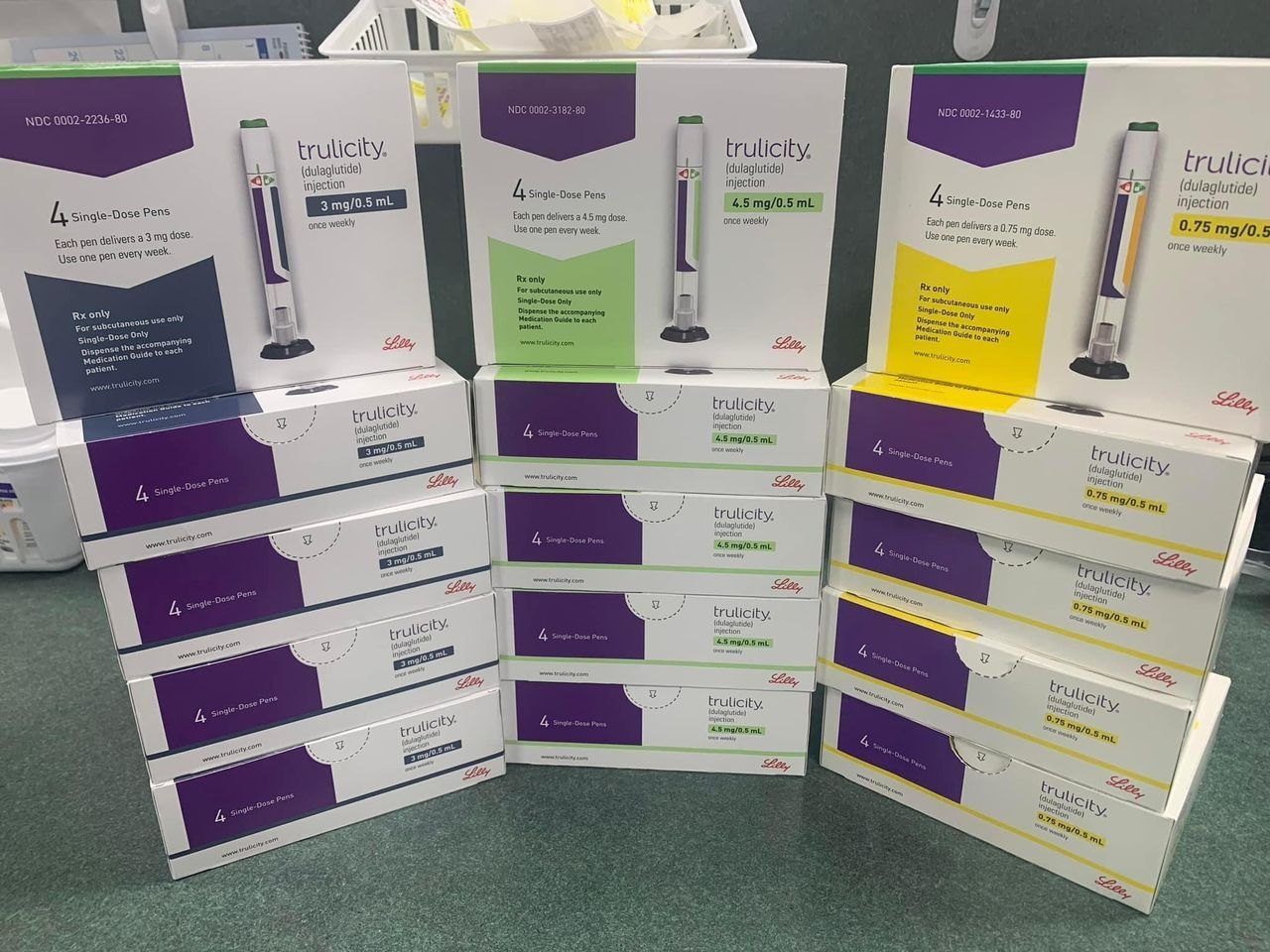
Usage in Type 2 Diabetes
Mounjaro® (tirzepatide) and Trulicity® (dulaglutide) are both medications used to treat type 2 diabetes. They belong to the GLP-1 receptor agonist class of drugs aiming at improving glycemic control in adults with type 2 diabetes mellitus. However, they work in slightly different ways to control blood sugar levels and promote weight loss as part of a doctor-guided metabolic reset.
Mounjaro is a novel medication that has been indicated for the treatment of type 2 diabetes. It aims to control blood sugar levels in conjunction with an appropriate diet and exercise plan. Although not a combination of metformin and sitagliptin, Mounjaro might be used alongside these medications in a comprehensive diabetic management plan.
Trulicity, on the other hand, is a popular medication also prescribed for the treatment of type 2 diabetes. It mimics the effects of GLP-1, a naturally occurring hormone that stimulates insulin secretion and lowers glucagon secretion from the liver. This results in lowering blood glucose levels in patients prescribed this medication.
One of the primary goals in type 2 diabetes treatment is to maintain healthy A1C levels that reflect a person’s average blood sugar levels over two to three months. Both Mounjaro and Trulicity have been shown to help patients achieve their targeted A1C levels as part of a comprehensive treatment plan that includes diet, exercise, and other diabetes medications, such as metformin.
In conclusion, Mounjaro and Trulicity are both effective options for treating type 2 diabetes and maintaining healthy blood sugar levels. The choice between these medications will largely depend on individual patient needs and a doctor’s recommendation. Nevertheless, both medications can play a crucial role in managing type 2 diabetes mellitus and promoting overall health and well-being.
Comparisons with Other Medications
Trulicity (dulaglutide) and Mounjaro (tirzepatide) are part of a class of medications called GLP-1 receptor agonists, which are commonly used to treat type 2 diabetes. In this section, we will briefly discuss how these medications compare to other popular diabetes medications, like Ozempic (semaglutide), Saxenda (liraglutide), Rybelsus (oral semaglutide), and Wegovy (semaglutide injection for weight management).
Trulicity vs. Ozempic Trulicity shares similarities with another GLP-1 agonist – Ozempic. Both are injectable medications taken once weekly to help with glycemic control in patients with type 2 diabetes. While they have a similar mechanism of action, studies have shown that Ozempic may help achieve better A1C reductions and weight loss when compared to Trulicity.
Mounjaro vs. Saxenda Mounjaro and Saxenda are both GLP-1 agonists, but they differ in their primary indications. While Mounjaro is used primarily for the treatment of type 2 diabetes, Saxenda is specifically indicated for chronic weight management as an adjunct to a reduced-calorie diet and increased physical activity. Although both medications may aid in weight loss, their usage is based on different medical needs and conditions.
Trulicity and Mounjaro vs. Rybelsus Rybelsus is another GLP-1 agonist that differs from Trulicity and Mounjaro in its formulation and route of administration. While both Trulicity and Mounjaro are injectable medications, Rybelsus is an oral tablet taken daily. The choice between injectable and oral options often depends on patient preference and individual response to treatment.
Comparing Wegovy with Diabetes Medications Wegovy is an injectable medication containing semaglutide, like Ozempic, but is specifically indicated for chronic weight management in adults with overweight or obesity. While it shares the same active ingredient as Ozempic, Wegovy is administered at a higher dosage to target weight loss. It is important to distinguish between diabetes medications and weight management medications, as they may contain the same active ingredients but are indicated for different purposes.
In summary, Trulicity, Mounjaro, and other GLP-1 receptor agonists play essential roles in managing type 2 diabetes and weight loss, depending on the specific drug and indication. Patients and healthcare providers should carefully consider the unique properties of each medication to determine the best course of treatment.
Consulting a Healthcare Provider
When considering treatment options for type 2 diabetes, such as Mounjaro (tirzepatide) and Trulicity (dulaglutide), it is essential to consult a healthcare provider. A healthcare professional can tailor a treatment plan to meet individual needs based on factors such as medical history, lifestyle, and overall health.
A healthcare provider will evaluate the patient’s medical history, including any pre-existing conditions, medication use, and lifestyle factors that may affect treatment outcomes. This thorough evaluation is essential to ensure the chosen treatment plan is safe and effective for the patient.
In discussions with healthcare professional, patients should be prepared to share information about their individual needs and concerns. This information may include weight management goals, concerns about potential side effects, and preferences for medication administration (such as oral medications vs. injections). By addressing these issues, healthcare providers can develop a more personalized treatment plan for each patient.
Healthcare professionals will also monitor the patient’s progress and adjust the treatment plan as necessary. This ongoing collaboration between patients and healthcare providers is crucial for successful diabetes management. Patients should follow medical advice closely and communicate any changes or concerns to their healthcare provider promptly.
Remember, it is always best to consult a healthcare provider before making any decisions about diabetes treatment. They have the necessary knowledge and expertise to evaluate individual needs and develop the most appropriate treatment plan for each patient. Maintaining open communication and regularly reviewing treatment plans with a healthcare professional can help ensure successful diabetes management and reduce the risk of complications.
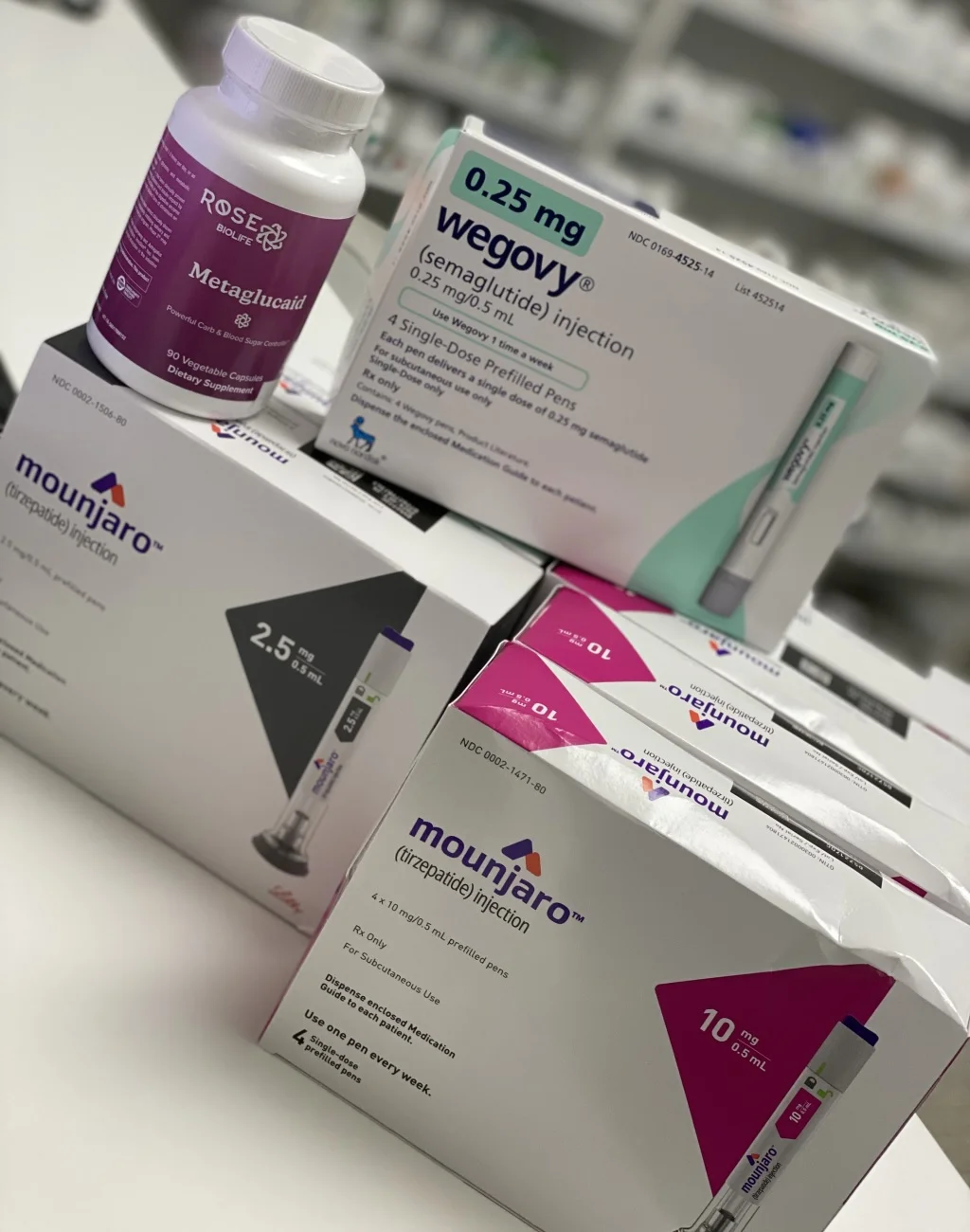
Insurance and Pricing Considerations
When comparing Mounjaro and Trulicity, it is essential to consider both insurance coverage and pricing for each medication. The costs of these medications can vary considerably, potentially affecting patients’ access to these treatments for type 2 diabetes.
Without insurance, the average monthly cost of Mounjaro is between $1,000 to $1,200, depending on the pharmacy. On the other hand, Trulicity can cost around $800 per month without insurance coverage. It is important to note that these prices may change, and it is best to consult with a healthcare provider or pharmacist for the most accurate, up-to-date information.
For patients with insurance, the out-of-pocket expenses for Mounjaro and Trulicity can vary based on the specific insurance plan. Some commercial insurance plans may offer lower copayments for a 1-month supply of Mounjaro, potentially reducing the cost to as little as $25. Similarly, Trulicity prices may also be lower for patients with insurance, but the exact amount will depend on individual insurance policies and the availability of copay assistance programs.
When considering the differences in insurance coverage and pricing for Mounjaro and Trulicity, it is important not to overlook other factors that may affect the overall cost of treatment. These include:
- Frequency of administration: Both medications are injectable, but they may differ in terms of how often they need to be administered. Frequency of administration can influence medication adherence and convenience for patients.
- Side effects: Different side effect profiles for Mounjaro and Trulicity may lead to varying patient tolerability and the potential need for additional medications to manage or prevent these side effects, adding potential cost considerations.
- Effectiveness: Patients should weigh the potential benefits and drawbacks of each medication, as differences in effectiveness could impact the perceived value and overall cost-benefit analysis.
In summary, when comparing Mounjaro and Trulicity, it is essential to consider insurance and pricing as important factors. However, it is equally important to consider other aspects of treatment, including frequency of administration, side effects, and effectiveness, which could impact patients’ overall treatment experience and costs.

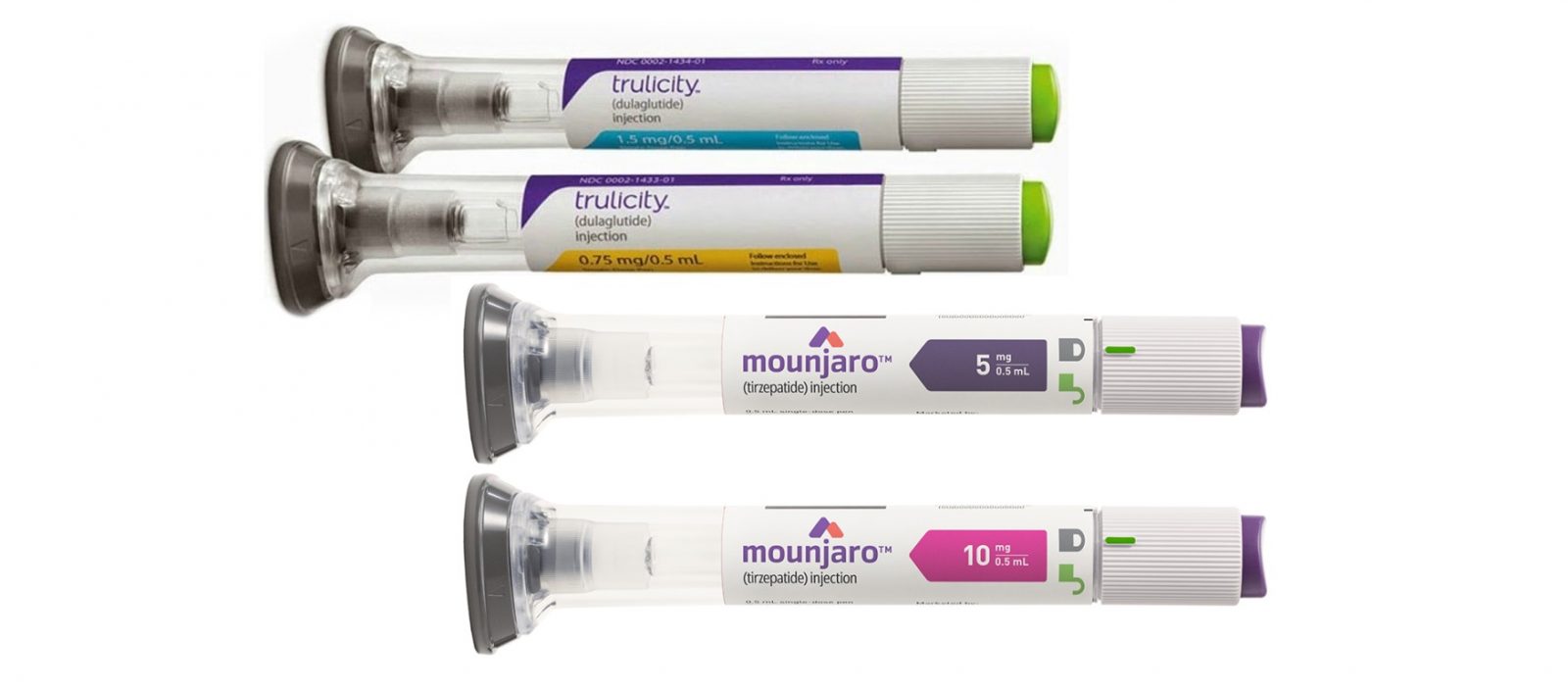





Leave a Reply
View Comments